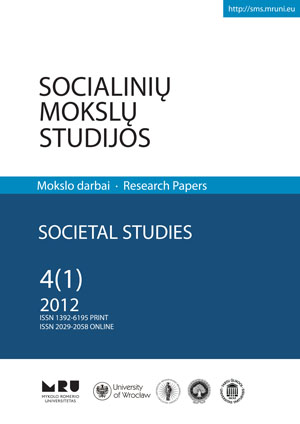Lygiagrečioji valstybių narių ir Europos Komisijos kompetencija taikyti ES konkurencijos teisės nuostatas ne bis in idem principo kontekste
European Commission and Member States Parallel Competence to Apply EU Competition Law Provisions in the Context of the ne bis in idem Principle
Author(s): Justina NasutavičienėSubject(s): Social Sciences
Published by: Mykolas Romeris University
Keywords: EU competition law; European Court of Human Rights; the ne bis in idem (non bis in idem) principle; parallel competence; allocation of cases; European Competition Network
Summary/Abstract: Ne bis in idem principle (or non bis in idem), as enshrined in Article 4 of Protocol 7 to the European Convention for the Protection of Human Rights and Fundamental Freedoms, prohibits the liability to be tried or punished again in criminal proceedings under the jurisdiction of the same State for an offence for which he has already been finally acquitted or convicted in accordance with the law and penal procedure of the State. The European Union Charter of Fundamental Rights repeats a similar ban extending its scope – those acts are prohibited not only in the territory of one Member State but across the whole EU. However, under Regulation 1/2003 Member States’ competition authorities and courts in some cases are bound to apply article 101 or 102 of the Treaty on the Functioning of the European Union. Therefore, the Commission, the competition authorities and courts of the 27 Member States share parallel jurisdiction of EU competition law. The system of parallel competence can lead to situations where the same violation of competition rules will be investigated and punished by several national competition authorities one after the other. However, under Council Regulation (EC) No 1/2003 of 16 December 2002 on the implementation of the rules on competition laid down in Articles 81 and 82 of the Treaty, Member States’ competition authorities and courts in some cases are bound to apply article 101 or 102 of the Treaty on the Functioning of the European Union. Since, as already has been stated, this principle is enshrined in Article 4 of Protocol 7 to the European Convention for the Protection of Human Rights and Fundamental Freedoms, at the beginning of this paper the author overviews the interpretation of the concept of ne bis in idem principle and its scope in the practice of the European Court of Human Rights. Then in the context of this principle the author analyses the system of parallel competences, established by Regulation 1/2003, highlighting main problems of the system. The paper is completed with the summary of the investigated issues and the main conclusions are presented.
Journal: Socialinių mokslų studijos
- Issue Year: 4/2012
- Issue No: 1
- Page Range: 277-297
- Page Count: 21
- Language: Lithuanian

